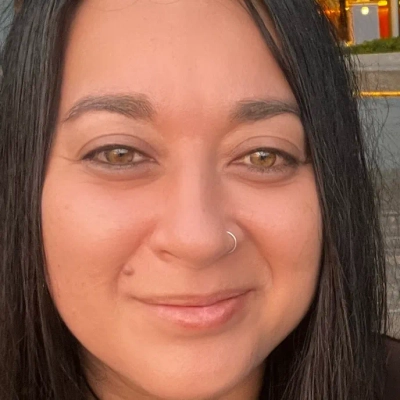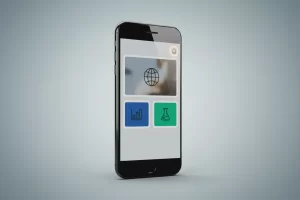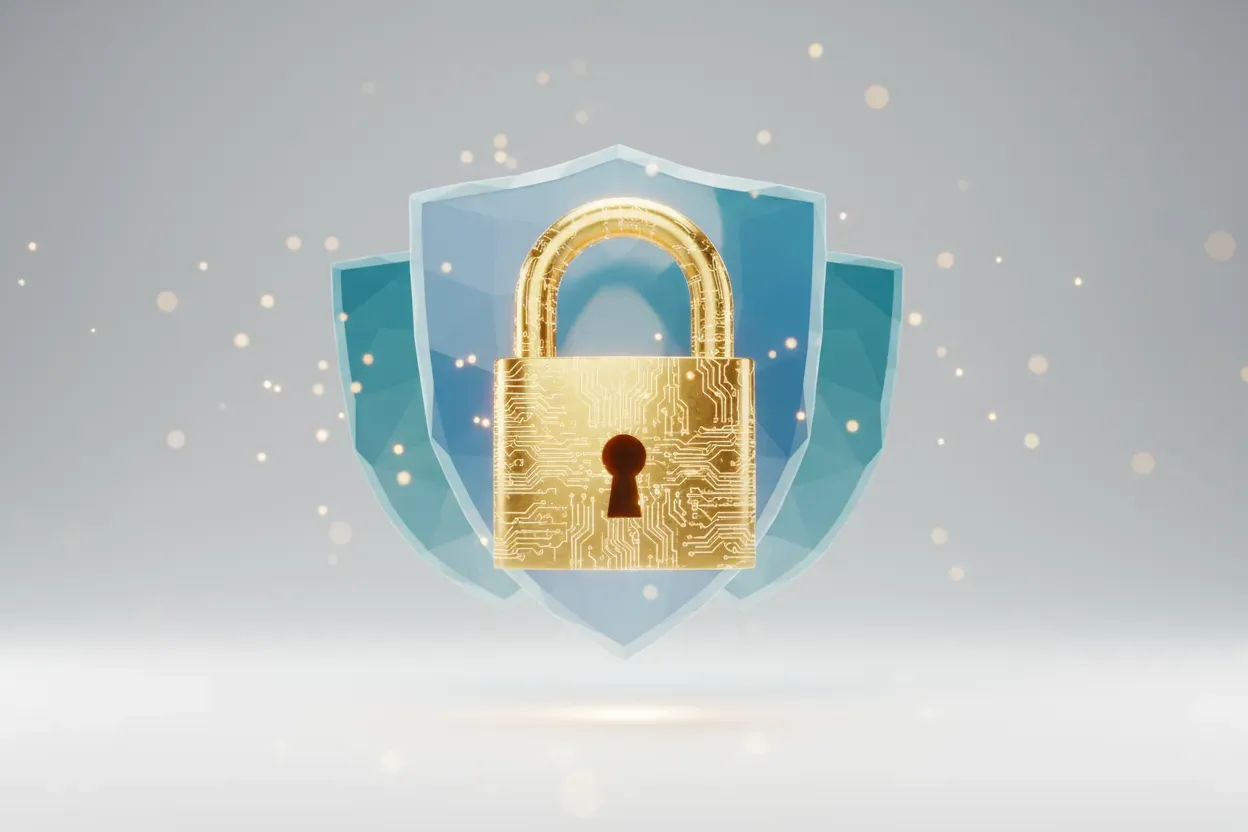25 Tips for Successful Business Partnerships and Collaboration
Business partnerships can make or break a company’s success. This article presents expert-backed strategies for fostering successful collaborations. From solving real pain points to creating interdependent value streams, these insights will help businesses build strong, lasting partnerships.
- Solve Real Pain Points Together
- Prototype First for Transformational Partnerships
- Create Interdependent Value Streams
- Focus on Problem-First Alignment
- Co-Create with Mutual Transparency
- Craft Custom Solutions with Local Partners
- Build Trust Through Consistent Reliability
- Nurture Relationships Beyond Transactions
- Adapt and Invest in Long-Term Partnerships
- Offer Unique Value to Aligned Audiences
- Listen Openly to Constructive Feedback
- Leverage Personal Recommendations for Local Partnerships
- Join Industry Networks for Strategic Growth
- Set Clear Goals for Measurable Outcomes
- Combine Strengths to Cover Blind Spots
- Create Triple-Win Partnerships with Authentic Value
- Align Intent for Long-Term Mutual Benefit
- Establish Clear Communication and Standards
- Deliver Consistently to Build Trust
- Find Partners with Complementary Expertise
- Embrace Authentic Influencer Collaborations
- Seek Mission-Aligned Partners for Long-Term Value
- Outsource Strategically for Operational Flexibility
- Implement Unified Workflow Systems
- Identify Core Functions for Effective Partnerships
Solve Real Pain Points Together
After building two companies and spending 15+ years in computational biology, I’ve learned that the most successful partnerships happen when you solve a real pain point together rather than just exchanging services.
Our partnership with Boehringer Ingelheim perfectly illustrates this. They needed to access insights from massive external healthcare biobanks but couldn’t move sensitive data due to privacy regulations. Instead of traditional data sharing, we brought our federated analysis directly to their data–letting them run complex genomic analyses without ever exposing patient information. This approach accelerated their drug discovery timeline by months.
The key factor was that we didn’t try to change their existing infrastructure or force them into our preferred workflow. Our platform integrated with their current systems while solving their core problem: accessing distributed data securely. They could suddenly analyze cohorts across multiple biobanks simultaneously, something impossible with conventional approaches.
My advice: focus on removing friction, not adding features. The best partnerships happen when you make something difficult become effortless. We’ve seen this pattern repeatedly–when you eliminate a major bottleneck in someone’s workflow, the collaboration becomes essential rather than just convenient.
 Maria Chatzou Dunford
Maria Chatzou Dunford
CEO & Founder, Lifebit
Prototype First for Transformational Partnerships
Years ago, I partnered with four peers from my professional speaking association to create a full-day regional event. We each wanted broader exposure, stronger testimonials, and high-quality video to attract meeting planners.
On my own, I might not have had the courage—but together, we pooled a modest budget, months of preparation, and complementary strengths. The result? Hundreds of attendees, delighted sponsors, media coverage, and even a five-figure profit.
The partnership worked because we were intentional:
• Aligned goals and values. We discussed expectations, boundaries, and desired outcomes extensively.
• Equal commitment. Not equal contributions, but equal skin in the game and “hunger” for success.
• Complementary strengths. Each of us played to our talents, from event design to marketing.
• Clear structure. We rehearsed, created job descriptions, and maintained consistent communication.
One piece of advice for others: prototype first. Try something small to test the working relationship before scaling up. And today, tools like AI can help you draft discussion guides, surface “what if” scenarios, and even manage collaboration more smoothly.
Collaboration at its best is transformational. For small business owners who often feel isolated, the right partnership can create results—and joy—that go far beyond what you’d ever achieve solo.
 Myra Corrello, PhD
Myra Corrello, PhD
Small Business Growth Strategist, Myra Corrello – Small Business Speaker / Coach
Create Interdependent Value Streams
As someone running both a digital marketing agency and serving as a pastor, I’ve learned that successful partnerships happen when you genuinely solve each other’s core problems rather than just exchanging business cards.
Our most transformative collaboration was with Matt Yerkes from Cultivate, who appeared on our Home Pro Podcast. Instead of a typical guest appearance, we developed a systematic approach where he provides business address solutions for our clients while we handle their complete digital presence. This partnership directly addressed our clients’ Google Business Profile validation issues – a critical pain point we couldn’t solve alone.
The key factor was creating interdependent value streams. When our HVAC client Apex Clean Air needed a legitimate business presence in their target market, Matt’s address services combined with our SEO work resulted in a 119% increase in website engagement. Neither of us could have achieved that result independently.
My advice: look for partners whose expertise fills gaps in your service delivery, not just your referral network. The strongest collaborations happen when saying “yes” to your clients requires both businesses working together seamlessly.
 Seth Evans
Seth Evans
CEO, Big Fish Local
Focus on Problem-First Alignment
I’ve built my career bridging the gap between enterprises and startups, so I’ve seen partnerships from both sides. The most transformative collaboration for Entrapeer was actually with our data partner Pinecone for vector embedding technology.
We were drowning in manual processes–our team was spending weeks analyzing startup data and creating market reports that would be outdated by the time they reached clients. Pinecone’s vector database allowed us to automate dynamic infographics that update in real-time as new use cases enter our platform.
The key factor was problem-first alignment rather than technology-first excitement. Instead of being impressed by their AI capabilities, we focused on one concrete pain point: “How do we make our market research auto-update without human intervention?” This laser focus meant implementation took days instead of months.
My advice: start every partnership conversation with “What’s the specific use case?” Most collaborations fail because companies chase shiny technology rather than solving actual business problems. When both sides can articulate exactly what success looks like in measurable terms, magic happens.
 Eren Hukumdar
Eren Hukumdar
Co-Founder, Entrapeer
Co-Create with Mutual Transparency
In my opinion, one of the most successful collaborations for Amenity Technologies was when we partnered with a mid-sized European insurance company to co-develop an AI-driven document parsing solution. What made it unique was that it wasn’t just a client-vendor relationship; it was a genuine co-creation effort. They provided access to anonymized real-world data and domain expertise, while we brought our AI engineering capabilities.
The key factor that made it work was mutual transparency and aligned incentives. Instead of guarding knowledge, both sides shared openly: they wanted efficiency, we wanted innovation, and together we created something scalable that served their business and expanded our product portfolio. That openness turned a one-off project into a multi-year partnership.
My advice to others? Don’t just chase “big names” for partnerships. Look for organizations where your strengths and their needs align, and where there’s room for joint learning. A collaboration succeeds not because contracts demand it, but because both sides see shared upside in growing together.
 Naresh Mungpara
Naresh Mungpara
Founder & CEO, Amenity Technologies
Craft Custom Solutions with Local Partners
Our biggest game-changer was partnering with Tim Adams for our coffee blend about six years ago. Instead of going with a big distributor, we worked directly with this local roaster to create the Vintage Black blend specifically for our Melbourne-inspired vibe.
What made it work was that Tim understood our vision and was willing to experiment. We spent weeks tweaking the blend until it matched exactly what we wanted – smooth enough for our oat latte regulars but bold enough to stand up to our hearty breakfast dishes. He also trained our team on proper extraction techniques, which took our coffee from good to great.
The results speak for themselves – George now has people driving from across the Coast just for our coffee. Our coffee sales increased by approximately 40% after switching to the custom blend, and it became a major differentiator when every other café was serving the same generic stuff.
My advice: find partners who see your success as their success. Don’t just buy products – find people who will invest time in understanding your brand and customers. Local partnerships often work better than big suppliers because they actually care about your individual business thriving.
 Janice Kuz
Janice Kuz
Owner, Flinders Lane Cafe
Build Trust Through Consistent Reliability
Great question – after two decades in franchising and managing major trade shows, I’ve seen partnerships make or break businesses constantly.
My most impactful partnership occurred when I was running a franchisee association and we negotiated with a national insurance provider. They needed access to thousands of franchise owners, and our members were being crushed by individual insurance rates. We structured a group purchasing agreement that saved franchisees an average of 30% on their premiums.
One specific franchisee told me that the savings from that single partnership paid for 20 years of his association dues in just the first year. That partnership generated nearly 40 vendor relationships for us, creating a revenue stream that funded better member services while solving real cost problems.
The key was focusing on their actual pain point – high insurance costs were killing profit margins. We didn’t try to be clever or complex. We just aggregated buying power to solve an expensive problem they couldn’t fix alone. My advice: find where your partner network has genuine leverage over a costly problem, then negotiate hard on volume discounts that create win-win-win situations.
 Ted O’Shea
Ted O’Shea
Tradeshow Event Manager, The Great American Franchise Expo
Nurture Relationships Beyond Transactions
Absolutely. One of the best collaborations I ever made was with a large commercial construction firm here in Sydney. We didn’t start big. It began with a small subcontract job—running underground power for a new industrial complex. But from the get-go, I knew it was more than just a job. It was about showing up, doing exactly what I said I would, and never dropping the ball. That job turned into three. Then ten. Eventually, we became their go-to for anything electrical—Level 2 upgrades, metering, disconnections, temporary power for sites, and even full rewires across multiple properties.
What made the partnership work? No fluff—just reliability. When they called, I answered. When there was a problem, I showed up. No excuses. No passing the buck. They knew they could count on Lightspeed Electrical because I wasn’t just managing from behind a desk—I was on-site, tools in hand, leading from the front. That built trust. And trust is currency in this industry.
To anyone looking to build strong partnerships: don’t chase every client. Chase the right ones. The ones who value consistency, honesty, and good old-fashioned work ethic. Don’t oversell. Don’t overpromise. Just deliver. Let your actions prove your worth.
That collaboration taught me this—long-term business doesn’t come from selling. It comes from solving. From doing the boring stuff right every single time, especially when no one’s watching. That’s what makes people stick. That’s what turns jobs into partnerships.
 Alex Schepis
Alex Schepis
Electrician / CEO, Lightspeed Electrical
Adapt and Invest in Long-Term Partnerships
One of the clearest examples I’ve seen of a partnership multiplying its value came from a long-term client we’d been supporting with both staffing and HR consulting. Over the course of a year, we hired 18 people for them, including a marketing specialist. What stood out was what happened next: that specialist, impressed with both our process and the way we handled candidates, later recommended us to their former employer. That introduction led to a new contract and a completely new line of collaboration for us.
What made it work was the combination of consistent quality, empathy during the hiring process, and aligning with the client’s culture so well that even their employees felt confident advocating for us. My advice: never treat interactions as transactional. A candidate today may be a client tomorrow, and the relationships you build ripple further than you can predict.
 Ann Kuss
Ann Kuss
CEO, Outstaff Your Team
Offer Unique Value to Aligned Audiences
We built a strong partnership with a consulting firm in the U.S. that didn’t have its own software team. They were skilled in strategy and client management, but when it came to technology delivery, that’s where we stepped in. Together, we could offer their clients the best of both worlds—business advice backed by working software.
What made this partnership successful was our approach. We didn’t treat them as just another client. Instead, we invested time in learning how they operated, how they communicated with their clients, and what they promised. Then we adjusted our own methods to ensure everything felt consistent to their clients. That effort built trust.
We also maintained clear communication from the beginning—outlining what we could do, what might take longer, and where we needed their input. This honesty helped avoid surprises and made them confident in assigning us larger projects. Over time, this partnership became one of our most reliable sources of business.
If I had to offer one piece of advice, it would be: don’t pursue every possible partnership. Select one where both parties contribute something substantial, and then be willing to adapt. That’s what transforms a contract into a long-term relationship.
 Vikrant Bhalodia
Vikrant Bhalodia
Head of Marketing & People Ops, WeblineIndia
Listen Openly to Constructive Feedback
One of our most successful partnerships was with a large Facebook deal-hunting community of 300,000 members. We provided them with a specialized comparison tool for cashback rates. This collaboration was particularly effective because we created something valuable that solved a specific need for their audience while simultaneously showcasing our expertise. The results were remarkable – we saw our engagement double, experienced a significant increase in social shares, and enjoyed a 40% jump in referral traffic that brought thousands of new loyal users to our platform.
For businesses seeking similar collaborative success, I would recommend identifying partners whose audience aligns with your target market but isn’t directly competing with you. The key is to offer something genuinely useful that serves their community’s needs while creating a clear path back to your business.
 Ben Rose
Ben Rose
Founder & CEO, CashbackHQ.com
Leverage Personal Recommendations for Local Partnerships
Our most valuable collaboration was with entrepreneurs and small business association leaders who provided critical feedback during our product development phase. We engaged them through surveys, interviews, and focus groups where we presented our draft exercises and tutorial videos for evaluation. Their honest feedback revealed significant gaps in our initial concept, which allowed us to redefine our target market and refine our service offerings before full launch. The key factor that made this partnership successful was our willingness to listen openly to constructive criticism rather than seeking validation for our existing ideas. For businesses looking to form similar collaborative relationships, I would recommend approaching potential partners with specific questions and being genuinely open to adjusting your direction based on the insights you receive.
 Franne McNeal
Franne McNeal
President, Significant Business Results LLC
Join Industry Networks for Strategic Growth
One of our most valuable business partnerships came about through a simple conversation with another resort manager who recommended a regional construction company. This connection proved incredibly beneficial as we were able to secure high-quality construction services at significantly reduced costs compared to the larger firms we had previously considered. The partnership not only improved our bottom line but also aligned with our values of supporting local enterprises within our community. I believe the key to this successful collaboration was the personal recommendation and the trust established through our professional network. For those seeking similar productive partnerships, I would encourage investing time in industry networking events and conversations with peers, as these relationships often lead to unexpected opportunities that formal procurement processes might miss.
 Billy Rhyne
Billy Rhyne
CEO & Founder | Entrepreneur, Travel Expert | Land Developer and Merchant Builder, Horseshoe Ridge RV Resort
Set Clear Goals for Measurable Outcomes
One of our most successful collaborations was joining an annual mastermind group that significantly transformed our business operations. The investment of $5,000 annually quickly paid for itself when the group introduced us to a new supplier who helped reduce our production costs by 15%. Beyond the immediate cost savings, the relationships formed through this network enabled us to establish strategic partnerships that were instrumental in expanding our product line. The key factor that made this collaboration successful was the intentional focus on building genuine relationships rather than just transactional interactions. For businesses looking to form similar productive partnerships, I would recommend investing time and resources in industry groups or networks where participants share common goals but bring diverse expertise to the table.
 Aviad Faruz
Aviad Faruz
Owner, Manor Jewlery
Combine Strengths to Cover Blind Spots
One of the most impactful partnerships for Franzy was with Eden Communications. They helped us craft a focused narrative and execute a targeted PR campaign that landed us in key franchise industry podcasts, trade publications, and networks. This collaboration boosted our visibility and brought in qualified leads, accelerating our growth trajectory.
The key to making this partnership successful was clear alignment on goals and metrics from the start, combined with open communication and trust. We treated PR as a growth channel, ensuring accountability and measurable outcomes.
My advice to founders looking for similar collaborations is to choose partners who understand your market deeply, set clear expectations and KPIs early, and focus on partnerships that deliver real business results.
 Alex Smereczniak
Alex Smereczniak
Co-Founder & CEO, Franzy
Create Triple-Win Partnerships with Authentic Value
One of our most impactful collaborations has been with FNBO. We wanted to bring modern, tech-forward banking into our platform, but credibility and trust are everything in finance—you can’t fake it. Partnering with a 165-year-old institution like FNBO gave us the stability, regulatory backing, and customer trust that a SaaS company on its own can’t replicate. At the same time, we were able to layer in a modern user experience—cash visibility, high-yield accounts, enhanced FDIC coverage—that FNBO wouldn’t have built alone.
What made it work was alignment: both teams were committed to combining our strengths rather than trying to duplicate them. My advice for others is to look for partnerships where you each cover the other’s blind spots. Customers can tell when a partnership is cosmetic versus when it actually makes the combined offering stronger—and the latter is what moves the needle.
 Aimie Ye
Aimie Ye
Head of Marketing, Centime
Align Intent for Long-Term Mutual Benefit
One of our most successful partnerships at DataNumen involved collaborating with Microsoft MVP Robert Sparnaaij, who runs the popular tech website robert365. This partnership perfectly demonstrates how strategic alliances can create value for all parties involved.
The Partnership Structure:
Robert featured our flagship data recovery product, DataNumen Outlook Repair, on his website with genuine recommendations based on his expertise. We provided him with exclusive coupon codes for his audience and established a commission structure for sales generated through his platform.
The Triple-Win Results:
This collaboration created genuine value for everyone:
1. For DataNumen: We saw measurable increases in sales and expanded our reach to Robert’s established, tech-savvy audience.
2. For Robert: He earned meaningful commissions while providing real value to his readers through vetted software recommendations.
3. For customers: They received discounted pricing on enterprise-grade data recovery solutions through the exclusive coupon codes.
Key Success Factors:
The partnership succeeded because it was built on authentic value exchange rather than just promotional tactics. Robert genuinely understood and believed in our Outlook data recovery capabilities, which made his recommendations credible to his audience.
Advice for Similar Collaborations:
Focus on creating genuine mutual benefit from day one. The best partnerships aren’t zero-sum games – they’re structured so every party wins. Look for partners whose expertise complements yours and whose audience naturally aligns with your solution. Most importantly, ensure the collaboration provides real value to the end customer, not just the business partners.
When all stakeholders benefit meaningfully, partnerships become sustainable and often lead to long-term strategic relationships.
 Robert Chen
Robert Chen
VP & CIO, DataNumen
Establish Clear Communication and Standards
One of our most impactful collaborations was with a boutique architecture firm specializing in heritage restorations. They needed a partner who could source historically accurate reclaimed stone at scale without compromising on authenticity or timelines. By aligning our sourcing network with their design vision, we secured rare French limestone from dismantled estates and integrated it seamlessly into their projects. The key factor was shared intent; both sides committed to preserving architectural integrity while delivering a commercially viable outcome. My advice: seek partners whose goals are not just compatible, but whose reputations will be strengthened by the alliance. That alignment turns a transaction into a long-term, mutually beneficial relationship.
 Erwin Gutenkunst
Erwin Gutenkunst
President and Owner, Neolithic Materials
Deliver Consistently to Build Trust
Our best deal at Angel City Limo was one in which we teamed up with a large Los Angeles event production company. They required a group transportation provider service for a dozen corporate events, each hosting 300-500 guests flying into various airports. We handled every detail from VIP airport transfers to on-site shuttle coordination, and by the third event, we had proven that we were their go-to partner not just for that event, but for every major activation.
What it took was clear communication and standards. We had co-planning calls weeks in advance, shared dashboards so we could be kept in the loop in real time, and a point person on both sides to ensure nothing got lost in the shuffle. All that alignment also meant fewer surprises on the day of the event, a better experience for guests and planners, and more time to think about the big picture.
I would advise others to seek partners who are in it for the long haul — who do not follow a “what have you done for me lately” model. If both parties are inspired to learn from one another, how they operate, and what each expects, you are no longer “a vendor” but a valued member of their team.
 Arsen Misakyan
Arsen Misakyan
CEO and Founder, Angel City Limo
Find Partners with Complementary Expertise
It was a few years ago when I partnered with a local property wholesaler who was coming across off-market deals all the time and just could not close them quickly enough. I had the underwriting and capital sources, and he had the deal flow. We did not complicate it too much – we settled on clear rules, respect for each other, and speed of communication. Together we closed more than 30 transactions in the next 12 months.
Some ideal contract was not what made it work. It was the trust that was gained by regular delivery. He could get me to fund fast, and I could get him to bring me real deals, not fluff.
That is an excellent partnership to seek, and a good place to begin is with someone who fills your gaps. Then make it simple. Be consistent. Be consistent. A relationship between partners will break when one partner becomes lazy or greedy. Keep on appearing as urgent as you were on day one. That is what keeps it going.
 Jimmy Fuentes
Jimmy Fuentes
Consultant, California Hard Money Lender
Embrace Authentic Influencer Collaborations
We’ve had a great ongoing partnership with a company that specializes in website audits. Many of their clients need backlinks once their technical SEO is cleaned up. On our side, some of our clients need deeper site audits before link building even makes sense. So we pass work back and forth.
What made it work is that there’s zero ego. We’re both clear on what we’re good at, and we don’t step on each other’s toes. We don’t upsell each other’s services. We just say, “Hey, I know someone who can help with that.”
If you’re looking for a similar setup, find partners with overlap – not competition. Keep things casual at first. You’ll know quickly if there’s real alignment.
 Kristiyan Yankov
Kristiyan Yankov
Growth Marketer, Co-Founder, AboveApex
Seek Mission-Aligned Partners for Long-Term Value
One of our most successful collaborations was with a customer who organically became a TikTok influencer for our whitening tray products. After noticing her genuine enthusiasm for our brand, we simply provided her with new products to support her content creation, which resulted in two highly effective videos that significantly boosted our sales. The key to this partnership’s success was its authenticity—she was already a satisfied customer who genuinely believed in our products before any formal arrangement began.
For businesses seeking similar collaborations, I would recommend identifying partners who already align with your brand values and have an established connection to your products or services. Building relationships based on mutual benefit rather than transactional agreements creates the foundation for partnerships that resonate with audiences and deliver measurable business results.
 Lindsey Wolf
Lindsey Wolf
Marketing Manager, SportingSmiles
Outsource Strategically for Operational Flexibility
One of our most successful collaborations was with a legal education platform that caters to early-stage founders. They were looking for credible, easy-to-use legal templates their users could trust, and we needed a distribution channel that reached exactly that audience. The partnership was a win-win — they added value to their offering, and we expanded our reach without spending heavily on ads.
The key factor that made it work was alignment — not just in audience, but in values. We both cared deeply about clarity, accessibility, and empowering users to make informed legal decisions. My advice to others: don’t chase visibility for its own sake. Look for partners whose mission genuinely overlaps with yours, because that’s where long-term value — and trust — is built. Start small, test the waters, and make sure you’re both solving the same problem from complementary angles.
 Daria Turanska
Daria Turanska
Legal Manager, Faster Draft
Implement Unified Workflow Systems
One of our most successful business partnerships has been our strategic outsourcing of non-core functions to specialized service providers. This collaboration significantly improved our capital efficiency by reducing upfront costs while allowing us to scale our workforce flexibly based on business needs. The key factor that made these partnerships successful was our clear identification of which functions were truly core to our business versus which could be handled by trusted partners with specific expertise. For companies considering similar collaborations, I would recommend conducting a thorough analysis of your operations to identify where external partnerships could provide both cost savings and operational flexibility. Maintaining strong communication channels with your partners and establishing clear performance metrics will help ensure these relationships deliver the expected value over time.
 Shantanu Pandey
Shantanu Pandey
Founder & CEO, Tenet
Identify Core Functions for Effective Partnerships
One of our most successful collaborations was implementing a unified workflow system during our app development process. By establishing a single source of truth across all teams, we created clear communication channels between our designers, developers, and stakeholders. The key factor that made this partnership work was our commitment to using specific, dedicated tools for each aspect of the project – Figma for design work, Notion for documentation, Slack for communication, and Jira for task management.
For companies looking to build similar successful collaborations, I would recommend investing time upfront to establish these clear systems and processes that everyone agrees to follow. Additionally, conducting frequent check-ins proved invaluable for keeping all team members aligned and addressing issues before they became problems.
 Xi He
Xi He
CEO, BoostVision







































